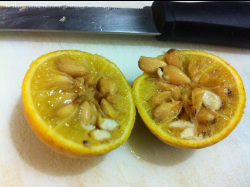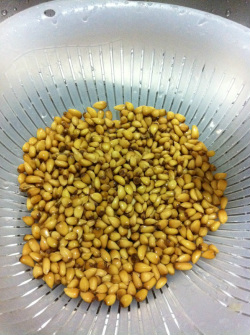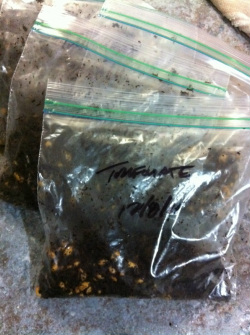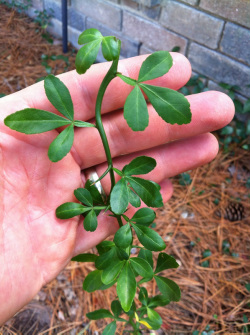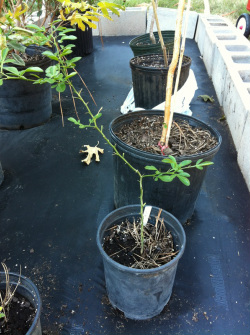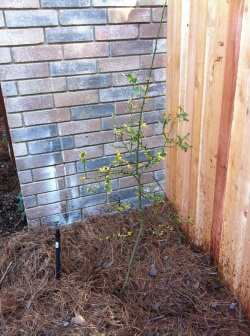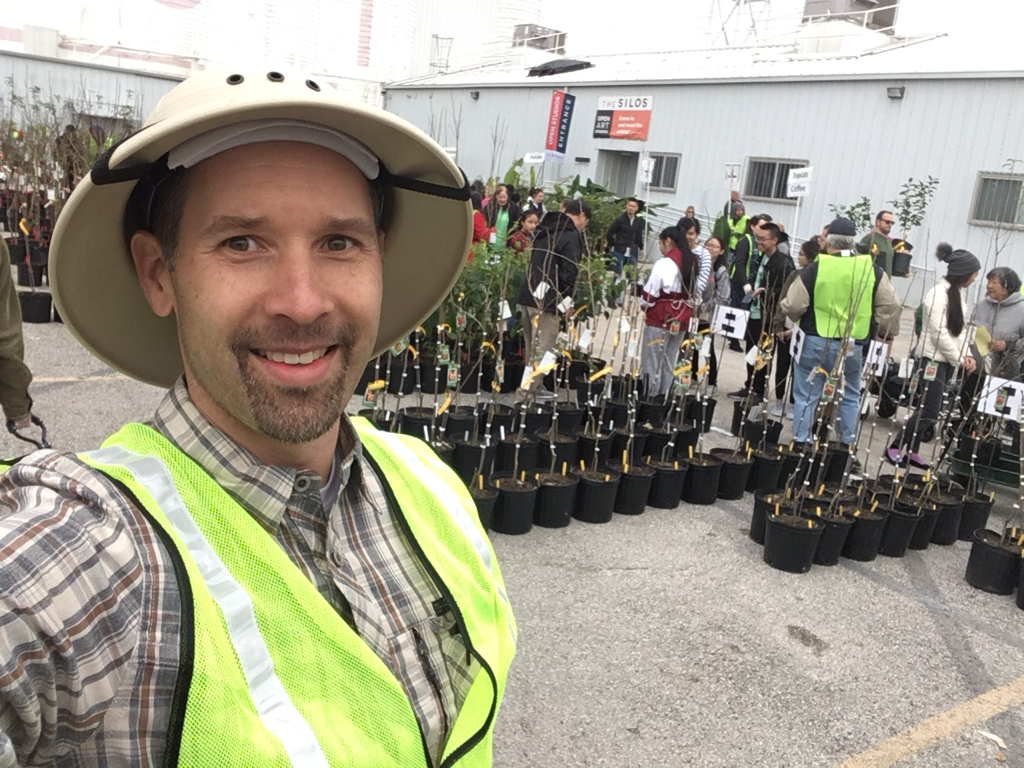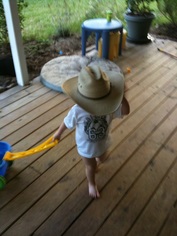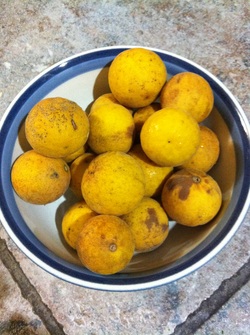
To obtain rootstocks, you can either dig up wild ones, or grow them from seeds. Unless you just happen to know where some are, digging your own isn't an option for most people, and finding seeds can be tricky if you don't know where to look. Fallen trifoliate fruit and seeds can be collected in the fall at the Armand Bayou Nature Center. Fortunately for me, a guy I work with has lots of wild trifoliate growing on his property, and he generously collected a bag of fruit for me (Thanks Mike!). Here's the method I learned from Mr. Texas for growing your own rootstocks from seeds:
Remove the seeds from several trifoliate or Flying Dragon fruits, and wash them in warm water to remove the slimy coating. Be careful not to damage the seeds when cutting into the fruit, and I would definitely recommend wearing disposable gloves. The gummy sap that allows Poncirus trifoliata to withstand cold temperatures is nasty smelling, and very very sticky. It can be very difficult to get off your hands, knives and cutting boards. If you get it on yourself, or it sticks to the cutting board, use vegetable oil to remove it, and then wash again with dish soap.
If you can't plant the seeds right away, put them in a ziploc bag with a moist paper towel or some moist peat moss, and put them in the refrigerator. Once you're ready to plant, just sow 30-50 of them (a good handful) in a plastic 3-gallon pot of potting soil, and water regularly. They'll sprout before too long, and you should have more seedlings than you need by April. In May or June, when the seedlings are looking really crowded, re-pot the the biggest seedlings into individual containers, water, and fertilize. If they get regular water and fertilizer, the most vigorous seedlings may be large enough to graft (pencil-thickness) by Spring. The others will need more time.
If you plant seeds every year, then you'll have a continuous supply of trifoliate rootstocks to graft or share. I planted seeds in two 3-gallons pots, and gave the rest away to members of the Texas Rare Fruit Growers. I also planted a wild trifoliate tree that Scott Johnsgard gave me in the front yard, which should supply me with plenty of seeds in a few years. I'm making plans to hunt down and dig up some wild trifoliate later this winter. If you have trifoliate growing on your property, or know where it is growing in a public place, let me know.
